Don't wanna be here? Send us removal request.
Text
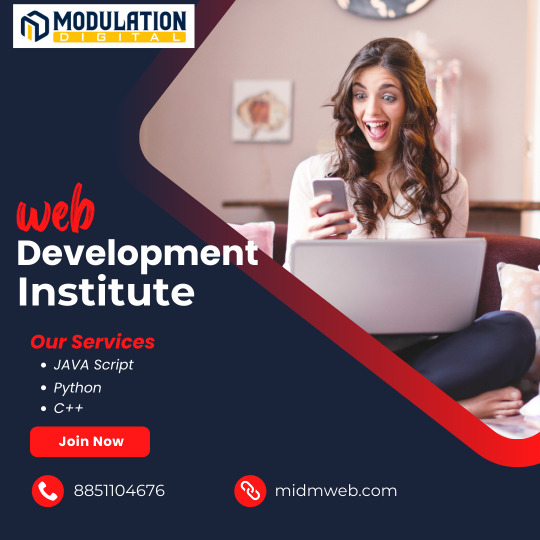
#digitalmarketing#education#website developer in delhi#data scientist#data science#website developer in india#digital marketing#website developer near me#website developers#bcom
0 notes
Text
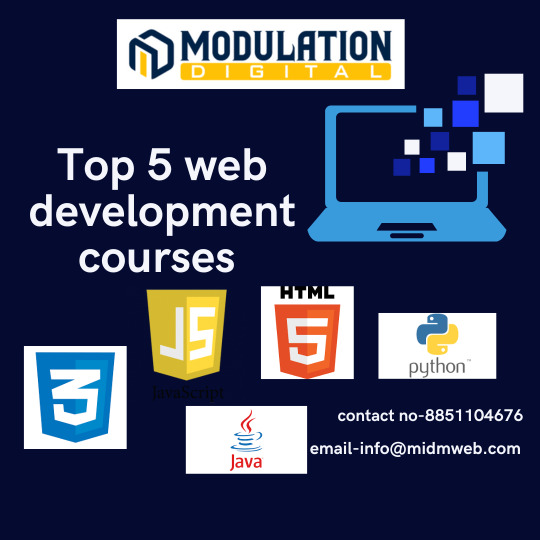
#digitalmarketing#website developer in delhi#data scientist#education#website developer in india#digital marketing#data science#website developer near me#website developers#bcom
0 notes
Text
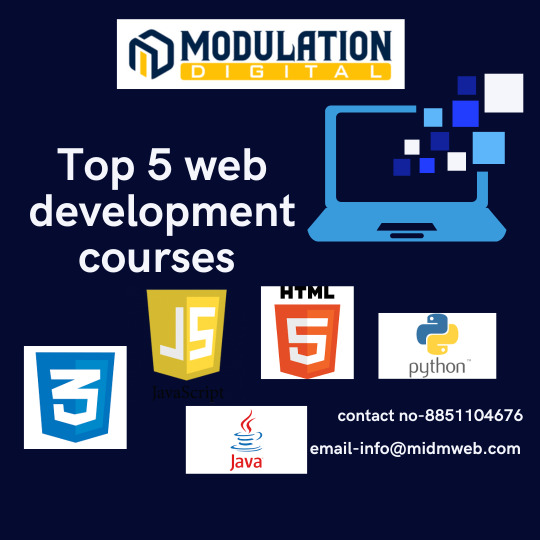
#data scientist#data science#digital marketing#website developer in delhi#education#website developer in india#digitalmarketing#website developer near me#website developers#bcom
0 notes
Text

#data science#digitalmarketing#website developer in delhi#education#website developer in india#digital marketing#data scientist
0 notes
Text

#bcom#digital marketing#data scientist#digitalmarketing#website developer in delhi#website developer in india#data science#education#website developer near me#website developers
0 notes
Text
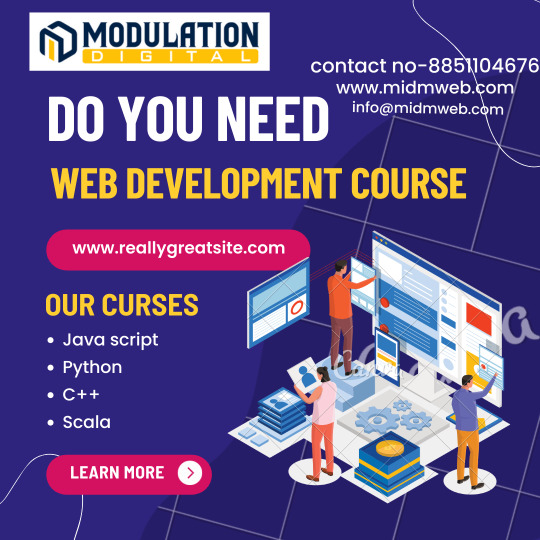
Best web development institute in Delhi
#education#website developer in india#website developer near me#website developers#website developer in delhi#data science#data scientist#digital marketing#digitalmarketing
0 notes
Text
Institute for Full stack web Best development in Delhi: Modulation Digital
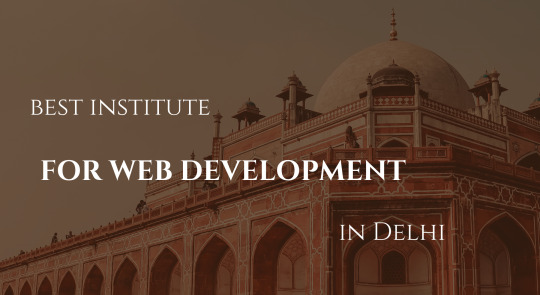
Modulation Digital stands out as the premier institute for website development in Delhi , offering comprehensive training in the dynamic field of full stack web development. With a focus on hands-on learning, Training on Live project, cutting-edge technologies, Special Doubt classes and industry-relevant skills. Modulation Digital equips students with the knowledge and expertise needed to excel in website development. The more, ensuring a well-rounded understanding of both front-end and back-end development. In 2024 company has huge vacancy for Web Developer at high paying salary. Students benefit from expert guidance, real-world projects, and a supportive learning environment, making Modulation Digital the ideal choices for those aspiring to master in Full stack web development course.
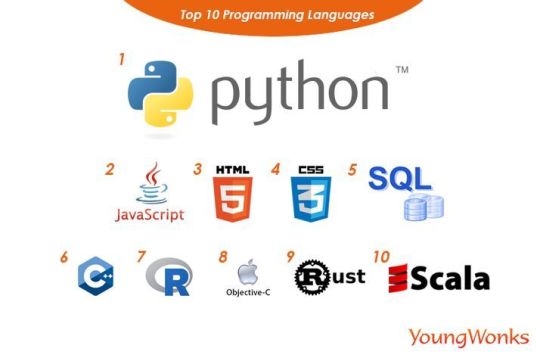
In the digital world, having a strong online presence is crucial for businesses and individuals for marketing. Website development plays a specific role in shaping this online identities and choosing the right institute for learning the craft is paramount. Modulation Digital emerges as a beacon in the realm of full stack web development education, standing out as the premier institute for honoring the skills needed to thrive in this ever-evolving field.
Why Modulation Digital?
1. Cutting-edge Curriculum: Modulation Digital boasts a curriculum that is scrupulous designed to cover the entire spectrum of full stack web development. From the fundamentals of HTML, CSS, and JavaScript to advanced topics like server-side scripting, databases, and frameworks, students are exposed to a comprehensive range of skills that are highly sought after in the industry.
2. Experienced Faculty: The institute takes pride in its team of seasoned instructors who brings a wealth of industry experience to their classroom. These experts are not only have a impart theoretical knowledge but also share practical insights, providing students with a well-rounded education that goes beyond the basics and good for the future of the students.
3. Hands-on Learning: At Modulation Digital, learning is not confined to textbooks and lectures. The institute emphasizes hands-on learning through projects and real-world scenarios, allowing students to apply their knowledge very comfort in practical situations. This approach ensures that graduates are not only well-versed in theory but are also equipped to tackle the challenges of the professional world.
4. Industry-Relevant Skills: The full stack web development industry is highly dynamic, with new technologies and trends emerging regularly. Modulation Digital stays ahead of the curve by updating its curriculum to include the latest tools, languages, and methodologies. Students graduate with skills that are not just relevant today but are also future-proofed for the evolving landscape of full stack web development.
5. Collaborative Learning Environment: Recognizing the importance of collaboration in the technical industry, Modulation Digital fosters a collaborative learning environment. Students engage in their group projects and helping each other to improve their skills, coding challenges, and peer-to-peer learning, preparing them for the collaborative nature of full stack web development teams in the professional world.
6. Career Support: Beyond the classroom, Modulation Digital is committed to the success of its students. The institute provides career objectives, support services, including resume building, interview preparation, and job placement assistance. This commitment to the success of their graduates sets Modulation Digital apart as an institute genuinely invested in the future for its students.
Types of full stack web development languages
Web design involves creating the visual elements and user interface of a website. Different coding languages and technologies play a crucial role in bringing web designs to life. Here are some key web designing coding languages:
HTML (Hypertext Markup Language): HTML is the fundamental markup language used to structure the content of a web page. It defines the basic building blocks, such as headings, paragraphs, images, links, and more. HTML provides the structure that forms the backbone of a website.
CSS (Cascading Style Sheets): CSS is used to style and format the HTML elements created on a web page. It allows designers to control the layout, colors, fonts, and other visual aspects. CSS enhances the presentation of web content and ensures a consistent and visually appealing design across different devices.
JavaScript: JavaScript is a versatile scripting language that adds interactivity and dynamic behavior to web pages. It enables the creation of interactive features such as sliders, pop-ups, form validation, and real-time updates. JavaScript is essential for creating a responsive and engaging user experience.
Bootstrap: Bootstrap is a popular front-end framework that simplifies web design and development. It is built on HTML, CSS, and JavaScript and provides pre-designed components and styles, making it easier to create responsive and visually appealing websites. Bootstrap is particularly useful for designers aiming for a consistent design across various devices. if you want a better learning modulation digital is the best options for learning in both offline and online manner.
Sass (Syntactically Awesome Stylesheets): Sass is a preprocessor scripting language that is interpreted or compiled into CSS. It adds functionalities like variables, nested rules, and a language concept that allows a programmer to inject some code into a class to CSS, making stylesheets more maintainable and efficient. Designers often use Sass to streamline the styling process and enhance the organization of their code.
Less: Similar to Sass, Less is another CSS preprocessor that extends the capabilities of traditional CSS. It introduces features like variables, nested rules, and a language concept that allows a programmer to inject some code into a class, allowing designers to write more modular and reusable styles. Less code is later compiled into standard CSS for browser interpretation.
jQuery: jQuery is a fast and lightweight JavaScript library that simplifies the process of handling HTML documents, events, animations, and AJAX interactions. Designers often use jQuery to add dynamic elements and effects to websites without having to write extensive JavaScript code.
Adobe XD, Sketch, : While not coding languages, these are popular design tools used by web designers to create prototypes, wireframes, and high-fidelity designs. Adobe XD, Sketch facilitate collaboration between designers and developers, streamlining the design-to-development workflow.
React, Vue.js, Angular: These are JavaScript frameworks/libraries that facilitate the development of dynamic and interactive user interfaces. React, Vue.js, and Angular are commonly used for building single-page applications (SPAs) and are favored by designers working on projects with complex user interaction.
Web Assembly : Web Assembly is a binary instruction format that allows high-performance execution of code on web browsers. While not directly a web design language, it opens up the possibility of using languages like C, C++, and Rust to build web applications, providing more flexibility in designing and optimizing certain functionalities.
Understanding and effectively using these web designing coding languages empower designers to create a visually stunning, interactive, and user-friendly websites. The combination of HTML, CSS, and JavaScript, along with supportive tools and frameworks, forms the foundation for modern web design.
Full stack web development is a diverse field that encompasses various approaches and technologies to create and maintain websites and web applications. Here are the main types of full stack web development:
Front-end Development: Front-end development, also known as client-side development, focuses on the user interface and user experience of a website in Delhi best institute for full stack web development . Front-end developers use languages such as HTML, CSS, and JavaScript to build the visual elements that users interact with directly in their browsers. This includes designing layouts, implementation responsive designs, and creating interactive features of full stack web development.
Back-end Development: Back-end development, or server-side development, involves working on the server side of web applications. Back-end developers are responsible for building and maintaining the server, databases, and application logic. Common back-end languages include PHP, Python, Ruby, Java, and Node.js. Back-end development ensures that data is stored securely, and the application functions as intended.
Full-Stack Development: Full-stack developers are proficient in both front-end and back-end development. They have a comprehensive understanding of the entire full stack web development process, from designing user interfaces to managing databases and servers. Full-stack development allows developers to work on all aspects of a project, making them versatile contributors to the development life cycle.
Mobile Development: With the increasing use of smartphones, mobile development has become a specialized area of full stack web development. Mobile developers create web applications optimized for mobile devices, ensuring a seamless user experience on smartphones and tablets. Mobile development often involves technologies like React Native, Flutter, and frameworks like Ionic for hybrid app development.
Web Design: While not strictly development, web design is a crucial aspect of creating visually appealing and user-friendly websites. Web designers focus on the aesthetics, layout, and overall look and feel of a website. They often use tools like Adobe XD, Sketch, or a cloud based design tool to create prototypes and collaborate closely with front-end developers to bring their designs to life.
Content Management Systems (CMS): Content Management Systems enable the creation and management of digital content without the need for in-depth coding knowledge. Popular CMS platforms include WordPress, Joomla, and Drupal. Web developers working with CMS customize and extend these platforms to meet specific project requirements.
E-commerce Development: E-commerce development involves creating online stores and platforms that facilitate online transactions. Developers in this niche work with frameworks like Shopify, Magento, or Woo Commerce (built on WordPress). E-commerce developers need to integrate secure payment gateways, manage product catalogs, and ensure a smooth shopping experience.
Progressive Web Apps (PWAs): Progressive Web Apps combine the best features of web and mobile applications, providing an app-like experience within a web browser. PWAs are designed to be responsive, reliable, and fast, offering offline capabilities and push notifications. Developers use technologies like Service Workers and Web App Manifests to create PWAs.
Web Security: Web security is a specialized field that focuses on protecting websites and web applications from various cyber threats. Security developers implement measures such as SSL certificates, encryption, and secure coding practices to safeguard sensitive user data and prevent unauthorized access.
Understanding these different types of full stack web development allows professionals to specialize in specific areas or become well-rounded full-stack developers capable of handling various aspects of web projects.
Conclusion:
In the world of website development, where the demand for skilled professionals for continues to rise, choosing the right educational institute for a crucial decision. Modulation Digital stands out as the premier institute for full stack web development, offering a combination of cutting-edge curriculum, experienced faculty, hands-on learning, industry-relevant skills, a collaborative environment, and robust career support. For those aspiring to embark on a successful journey in full stack web development, Modulation Digital is the best gateway to getting the world of opportunities and possibilities.
1 note
·
View note